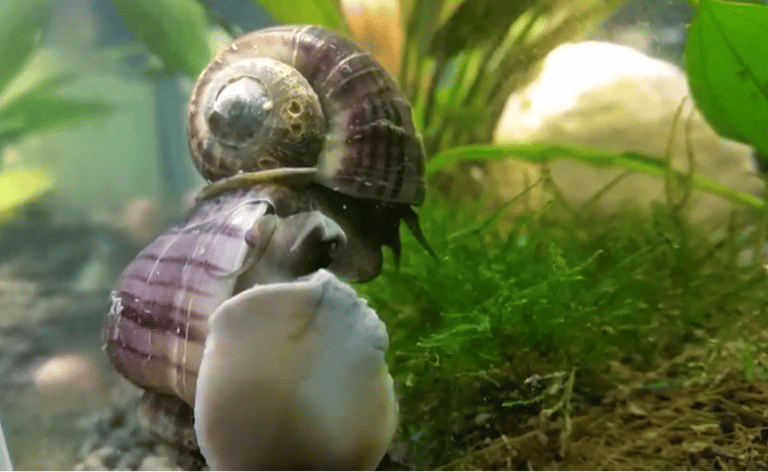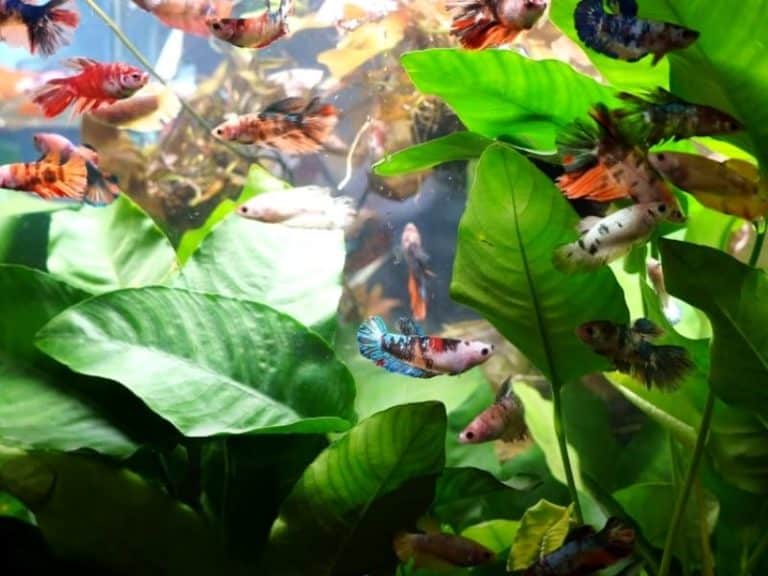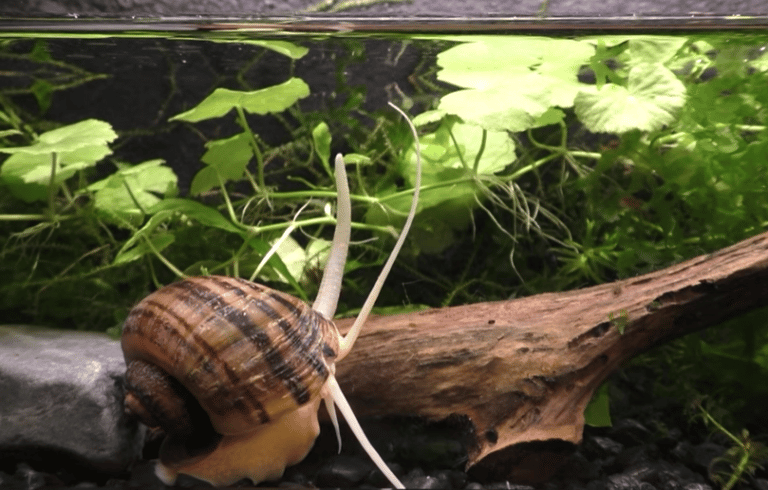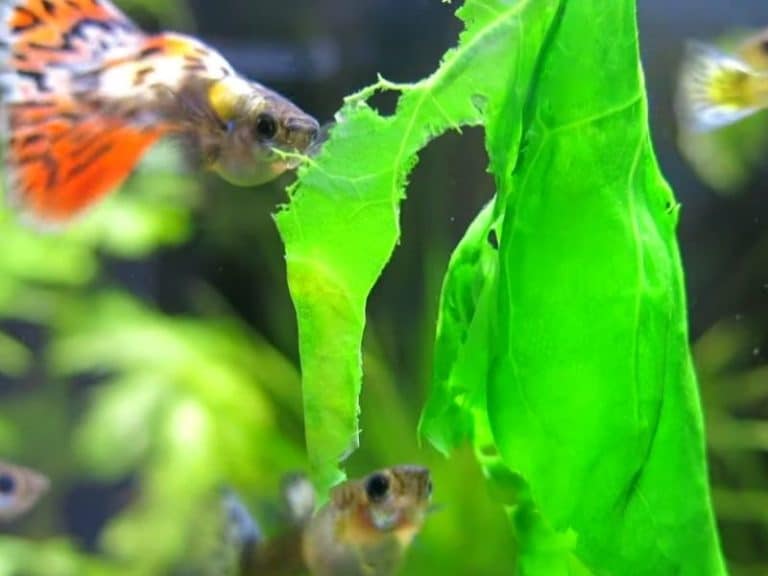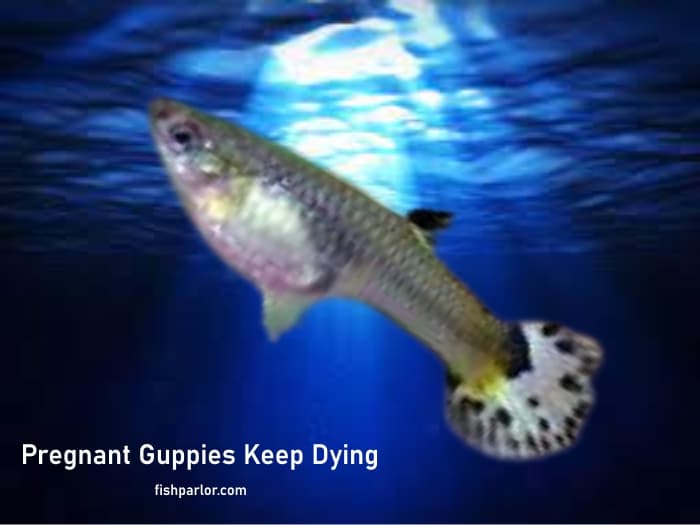Unlike schooling fish, guppies swim everywhere and in different directions. Their swimming behavior makes them very interesting to watch. However, you might spot one or two guppies inverted. This can be at the top or bottom of the tank.
Swim bladder disorder is one of the main reasons why a guppy may swim upside down. It’s a condition that can be caused by injury, overeating, constipation, or bacterial infection. Adjusting the fish diet to regulate air in the bladder can help manage this disorder.
The swim bladder, a gas-filled internal organ in the body cavity, allows fish to control their buoyancy. It acts as a sound producer, receptor, or respiratory organ. When the swim bladder is affected and does not function properly, the guppy is said to have swim bladder disorder. The bladder is also known as a gas bladder, fish maw, or air bladder.
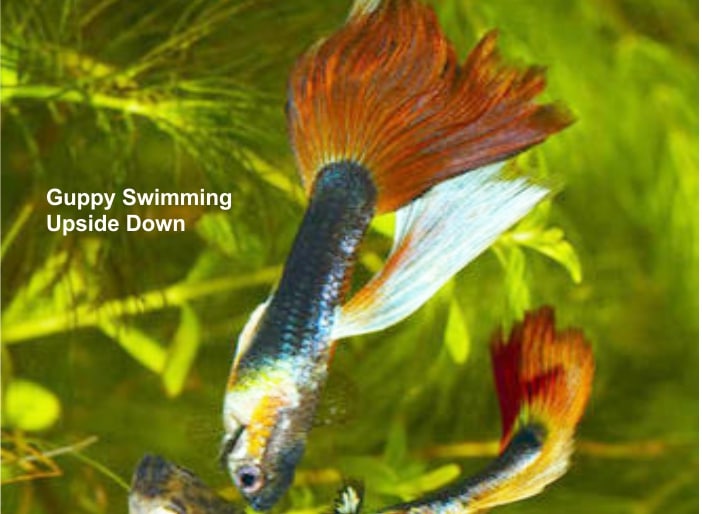
Why is My Guppy Swimming Upside Down?
A guppy with the swim bladder disorder will float nose down, tail up, swim upside down, sink at the bottom, or float to the top of the tank. Other symptoms include loss of appetite, still fins, uncontrollable shaking, bloated belly, and curved back.
Since swim bladder disorder is the major cause of reversed swimming, let us look at some of its causes;
1. Injury
An injury can cause the swim bladder disorder from being hit by a tank mate or a decoration within the tank. To differentiate the two, you have to look for other signs. For example, check whether the tank has too many decorations obstructing the fish as they swim around or sharp-edged decorations. Look for signs of fighting and bullied guppies.
If the tank has excess or sharp-edged decorations, remove them. Also, any bully should be removed from the tank because it might cause further damage to the sick fish.
2. Overeating
Overeating is a major cause of swimbladder disorder. Some fish do not know their limit and will eat all provided food. Overeating will cause a bloated stomach and constipation. A bloated stomach will press the swim bladder, causing the disorder.
When a guppy swallows air while feeding, the air will cause the stomach to bloat. Feeding a guppy with floating food will make it gulp air. Also, feeding them processed food will cause constipation. However, the swim bladder disorder causes constipation, so be keen on the diagnosis.
3. Low water temperature
Low water temperature in the tank will lower the guppies’ metabolism, making them struggle to digest food. Failure to digest food properly will enlarge their gastrointestinal tract, causing constipation.
4. Other organs enlarging
When other organs surrounding the swim bladder enlarge, they press the swim bladder, causing it a disorder. Such organs include the kidney, liver, and stomach. A pregnant guppy is at risk of getting swim bladder disorder when the stomach gets very big.
5. Bacterial and parasitic infection
Some parasites will affect the swim bladder. But more often, the parasite will affect other organs around the swim bladder, which will affect the swim bladder. Failure to clean the tank of leftovers and guppy waste will result in the growth of these harmful bacteria.
6. Birth defects
The swim bladder disorder has also been seen in guppy fry, which has not suffered any injury or has feeding problems. This type of disorder is believed to be genetic, and you can do nothing to help the little guppy.
Symptoms of Swim Bladder Disorder
Signs of barotrauma include a swollen abdomen, bulging eyes, and the stomach everted through the mouth. Research findings indicate that the survival of fish experiencing barotrauma can be significantly increased using a variety of methods that quickly return the fish to depth while minimizing injury.
University of Forida on Swim Blader Trauma.
The following are signs that a fish is suffering from a swimbladder disease;
1. Buoyancy
A fish with swim bladder disorder will have trouble staying buoyant. The guppy will float at the top of the tank or sink to the bottom. Swimming will be a problem because it cannot stay upright.
2. Bloated stomach
As explained earlier, the leading cause of swim bladder disorder is overfeeding and constipation. Therefore, a fish with the disorder will have a bloated stomach.
3. Loss of appetite
The guppy will have stomach problems, and eating will not be an option. It will struggle to get to the food even when it wants to eat because it lacks buoyancy. However, the fish will have no appetite.
4. Clamped Fins
A fish with clamped fins normally suffers from a bacterial or parasitic infection. The clamped fins will at least eliminate overfeeding and constipation as the cause of the disease.
5. Swimming vertically
A guppy swimming vertically will also be caused by a lack of buoyancy due to the failure of the swim bladder.
How to Treat Swim Bladder Disease
We have already established that the cause of a guppy swimming upside down is the swimming bladder disorder. The only way to help is to treat the disease. However, the approach will depend on the cause. Below are some of the treatment options.
1. Regulate feeding
Withhold food for at least three days, and on the fourth, feed the guppy with a cooked skinned pea. Increase the temperature to about 78 – 80 degrees F during this time to increase metabolism and enable the digestive system to work faster. From the fourth day, feed the guppy with a high-fiber diet and avoid overfeeding. Avoid feeding guppies with processed food or floating flakes and pellets.
2. Use Epsom salt
Epsom salt (magnesium sulfate) is suitable for treating swim bladder disorder. It will relax muscles and ease constipation. Put one teaspoon of Epsom salt in one gallon of water, let the fish swim for about fifteen to thirty minutes, and then return it to the aquarium.
3. Provide medication
If fasting and Epsom salt do not give the guppy relief or if the guppy has clamped fins, the guppy should be treated with medication. Antibiotics will help but consult a Vet to determine if bacteria or parasites have caused the disease because each treatment is different.
Conclusion
Guppies have various swimming patterns, but swimming upside down or vertically is not one of them. The condition is caused when a guppy lacks buoyancy because of the swim bladder disorder. The disease is mainly caused by overfeeding or feeding the guppy a poor diet causing its belly to bloat and constipation.
The disease should be treated immediately because delays could cause irreversible damage. The disease can be treated with Epsom salt, fasting, or medication. However, the treatment is based on the cause of the disease.
References include Petmd: Swim Bladder Disorders in Fish and Wikipedia in Swim Bladder Disease description.

